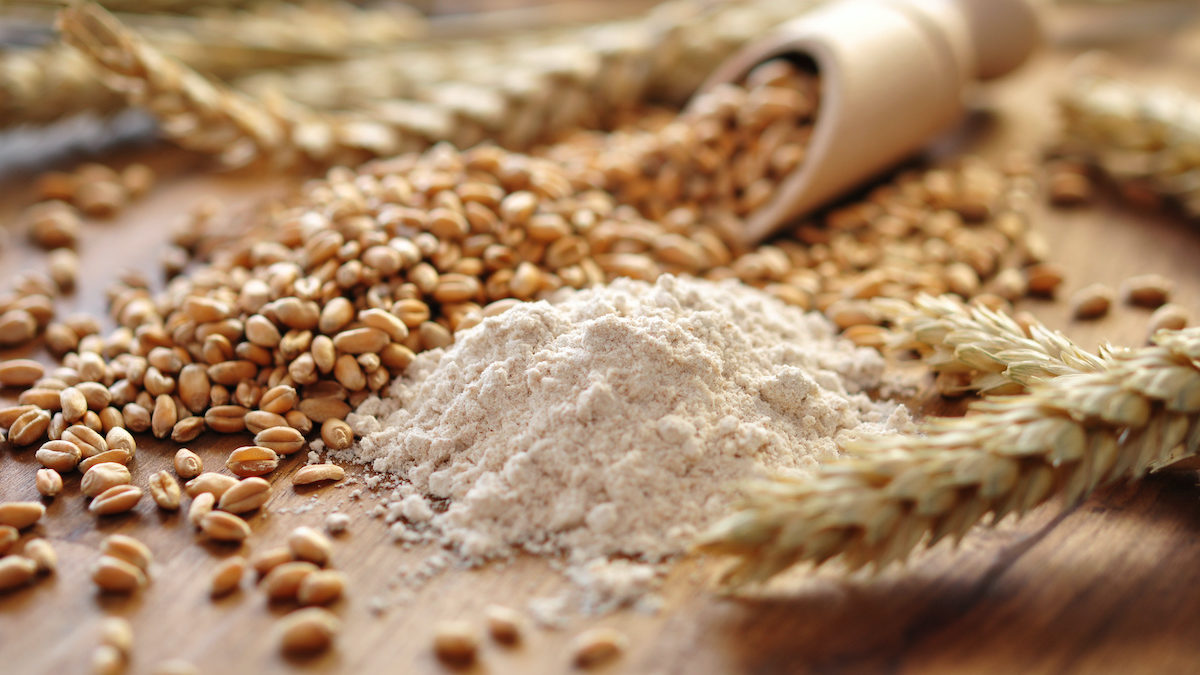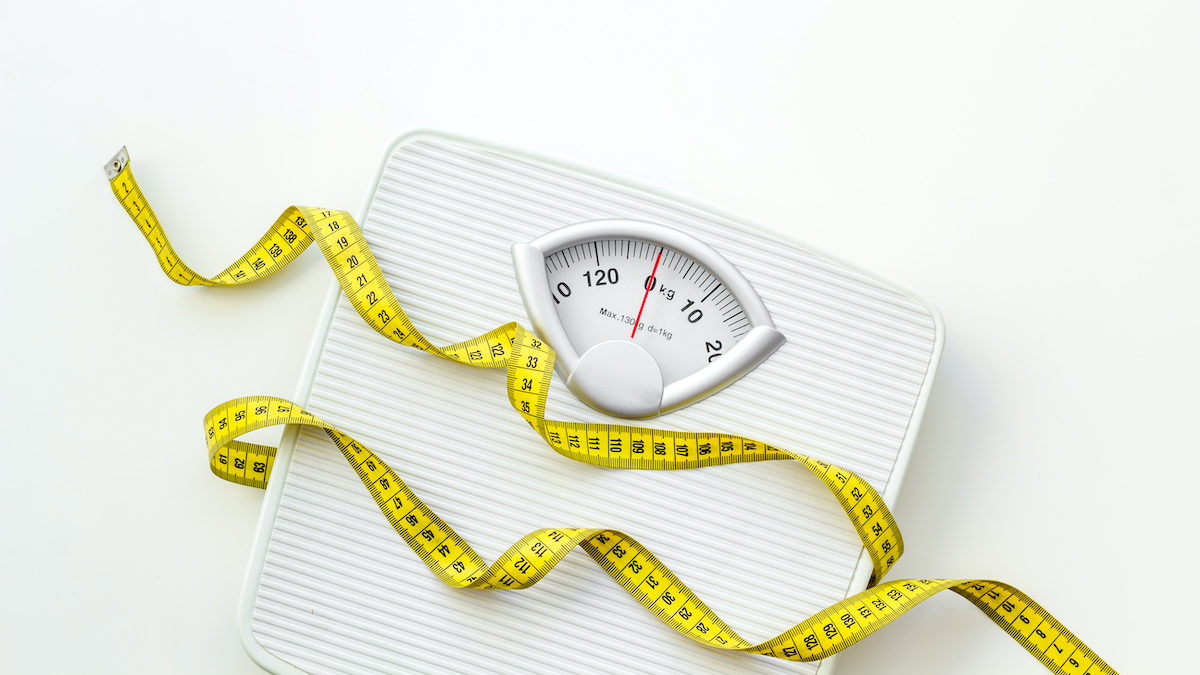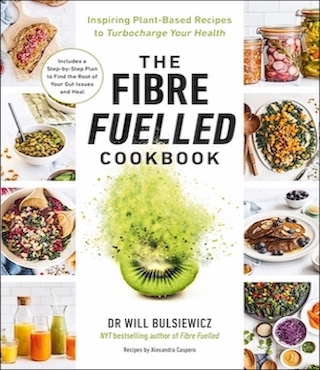The Importance of Fibre and Why Some Diets Could Be Bad for Your Gut

From low-carb and paleo to intermittent fasting and Whole30, the internet is packed with competing, and often contradictory, diet trends that promise a slimmer waistline with a singular, secret weight-loss weapon. Skipping meals, eliminating sugar, cutting out carbs and avoiding fats are all commonplace in the world of crash diets.
But according to gut health guru Dr Will Bulsiewicz (@theguthealthmd) many of today’s most popular diet plans overlook one crucial factor: that fibre is the single greatest building block for total-body health. And as a worrying 91 percent of us in the UK are deficient in the nutrient, slashing our intake of high-fibre foods in the fight against fat could be putting our gut out of whack.
Bulsiewicz, who is known as ‘Dr B’ by his 380,000 Instagram followers, is a gastroenterologist, graduate of Georgetown University of Medicine and the author of the best-selling gut bibles ‘Fibre Fuelled’ and ‘The Fibre Fuelled Cookbook’.
By eating with our gut microbiome in mind, he believes that we can lose weight, avoid restriction and supercharge our health, all at the same time.
What Exactly Is The Microbiome?
There’s a special relationship between fibre and your gut microbiome — the community of microorganisms, such as fungi, bacteria and viruses, that live in our digestive tracts. According to Bulsiewicz, the ecosystem in your gut is as diverse as the Amazon rainforest, and new research is just beginning to shed light on how essential it is to our physical and mental wellbeing.
“Imagine that in the 21st century we discover a new organ that’s critically important to your digestion, your metabolism, your immune system, hormones, mood, and your brain health. The microbiome is invisible — we can’t see it and it’s not formally part of our body — but it’s there and it’s revolutionizing the way that we understand so much of human health.”
Studies have found that the gut’s complex body of microbes can help to govern nearly every function of the human body in some way or another, impacting everything from asthma and irritable bowel syndrome, to anxiety and depression. It exists in a delicate balance too; our microbiome is constantly adapting to our environmental changes, while health, stress, diet, age, gender, and everything you touch, can alter the composition of gut bacteria.
“The great thing about the microbiome is that it’s adaptable; it’s not a hard code that you receive at birth,” notes Bulsiewicz. “It can be shaped and formed like a piece of clay, meaning you have the power to take your health into your hands and make choices through your diet and lifestyle.”

Why Fibre Matters
Dietary fibre isn’t exactly the trendiest term in the wellness world. Unlike buzzwords like keto and paleo, it can conjure up images of tasteless grains and brown-bread sandwiches. But there’s a reason we should be taking note of it.
“Fibre is important because it’s food for our microbiome,” explains Bulsiewicz. “In recent years, we’ve discovered that breast milk contains over 200 varieties of compounds called human milk oligosaccharides (HMOs). They have zero nutritional value to the baby, but are, in fact, food for the developing baby gut microbiome.” Essentially, he says, we as humans have evolved to feed our own microbes.
Fibre is typically found naturally in plant foods like whole grains, beans, nuts, fruit and vegetables. A recent study published in The Lancet found people who routinely eat lots of fibre have significantly lower rates of diseases such as heart disease, stroke and type 2 diabetes, compared with those who consume much lower amounts. Adults in the UK are recommended to consume 30 grams per day, yet many of us fall short.
“If I walk out onto the street, 19 out of 20 people that I come into contact with are deficient in fibre, and they’re not slightly deficient — they’re wildly deficient.”
Bulsiewicz believes that we are living in the most fibre-deficient time in history because in the past, we never had the means to replace fibre with so much ultra-processed food. “Only 10 percent of our dietary calories come from plants, yet in a 2019 systematic review which looked at more than 120 million people’s data, those that consume more fibre in their diet were found to be less likely to have a heart attack, stroke or diabetes, die of heart disease or have three different types of cancer. Given the amount of money that we spend on healthcare, how is it that we are not shouting about fibre every day?”

How Fad Diets Fail Our Gut
Bulsiewicz’s big message is that the single greatest predictor of a healthy gut microbiome is the diversity of plant’s in one’s diet. And it’s not just about rotating the same few vegetables either, as studies show that eating a variety of plants encourages the growth of different species of bacteria. Widely accepted research from The American Gut Project now suggests we should all aim for 30 different types each week.
“In the paleo diet, for reasons that are not scientifically motivated, people are encouraged to eliminate legumes and whole grains,” says Bulsiewicz. “But the healthiest blue zone populations in the planet consume a diet that is predominantly these foods.”
Blue zones are geographic areas in which people have low rates of chronic disease and live longer than anywhere else. “When we perform population-based studies, we find that people [who eat legumes and whole grains] have lower risk of heart disease, lower risk of cancer and they live longer too. These are longevity foods, and I would argue that a big part of the reason why they are so because they actually fuel the microbiome with all three major types of prebiotics.”
While Bulsiewicz believes that there are some good aspects to many popular diet plans, long-term elimination diets are ultimately harmful to a harmonious gut. “Doing a permanent restriction, like low-FODMAP, is like injuring your knee and making the decision to never walk on it again.

“The reason people bloat from FODMAPs (short-chain carbohydrates that are poorly absorbed in the small intestine) is because the body is not adapted to them and the microbiome is struggling to keep up.”
The correct approach, which he details in his new cookbook, is to know which FODMAPs you are sensitive to, and then reduce the amount that you’re consuming, giving your microbiome the opportunity that it needs to adapt. Introducing them back onto your plate slowly allows you to eat these foods without discomfort, he says.
Another thing to remember? That you can lose weight and become less healthy in the process. “Could a registered dietician create a healthy version of the keto diet? Yes they could,” says Bulsiewicz, “but that’s not what people are doing in the real world. People are hearing ‘reduced carbs’ and thinking that means reduced fibre. And we don’t know what the long-term consequences of this are.”
The Only Diet Plan You Need
 When it comes to food, he has just one golden rule: eat a diversity of plants. “I’d go so far as to say stop counting grams of fat, start counting plants.
When it comes to food, he has just one golden rule: eat a diversity of plants. “I’d go so far as to say stop counting grams of fat, start counting plants.
“If you’re cooking a tomato sauce, see it as an opportunity to get as many different plants as possible in there. A smoothie can be a vehicle to feed your microbiome where you add chia, flaxseed, hemp, walnuts, greens, broccoli sprouts and different berries. Easily you’ve had 10 different plants and it’s only Monday morning.
“Gameify it,” he adds. “It’s the most powerful and delicious way to approach our nutrition and enhance our health at the same time – and you don’t have to count calories.”
‘The Fibre Fuelled Cookbook: Inspiring Plant-Based Recipes to Turbocharge Your Health’ by Dr Will Bulsiewicz is out on 19th May (£18.99, Ebury)


















